Updated 16 July 2025
Today, we are going to talk about the PIM Solution Comparison – Open Source vs SAAS.
In the busy world of online shopping and digital marketing, it’s super important to manage product information well.
A PIM software can change how businesses run and keep their data consistent across different platforms.
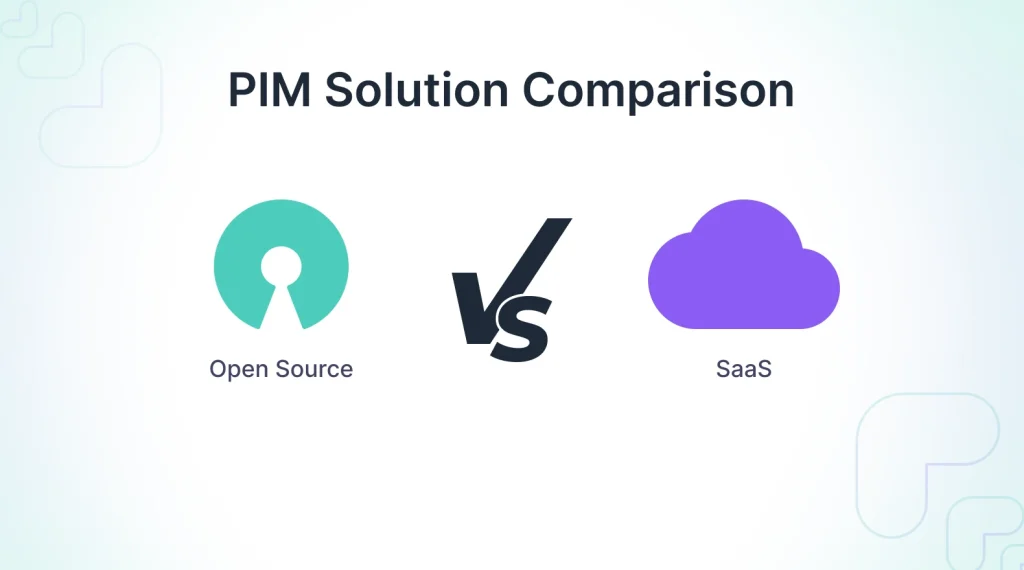
But picking the right kind of PIM software, whether it’s open source PIM or Software as a Service (SaaS), can be tricky.
This guide will highlight the advantages and disadvantages of each choice to help you make a smart decision.
PIM system can boost how well your business runs and improve how customers feel about their experience. Here are some great reasons to think about it:
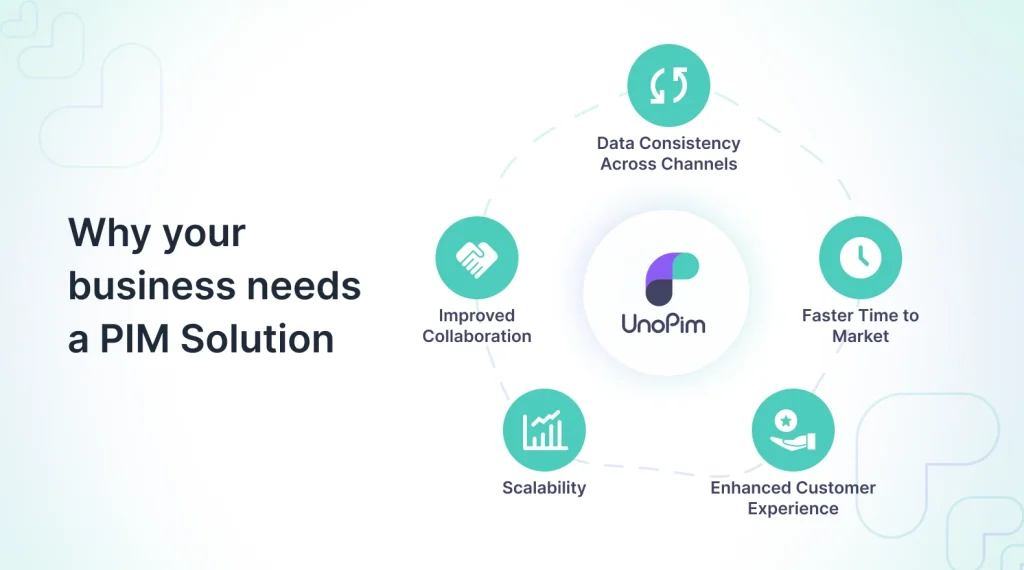
Data Consistency Across Channels
A PIM helps keep product information the same on all sales channels, which lowers the chances of mistakes that could upset customers.
Faster Time to Market
Managing product information in one central place speeds up how quickly new products can be launched.
It helps businesses react to changes in the market. This gives them an advantage over their competitors.
Enhanced Customer Experience
Having clear and detailed product information helps customers choose wisely, which can result in more sales and loyal shoppers.
Scalability
When your product catalog grows, a PIM solution can grow with it.
It makes it easier for you to handle more complexity while still keeping everything under control.
Improved Collaboration
A centralized system helps different departments, such as marketing, sales, and IT, work together better. It makes sure that everyone has the same information about the product.
Open source PIM software provide significant flexibility and control for businesses.
By allowing access to the source code, these solutions enable companies to tailor the software to their specific needs, leading to a highly customized experience.
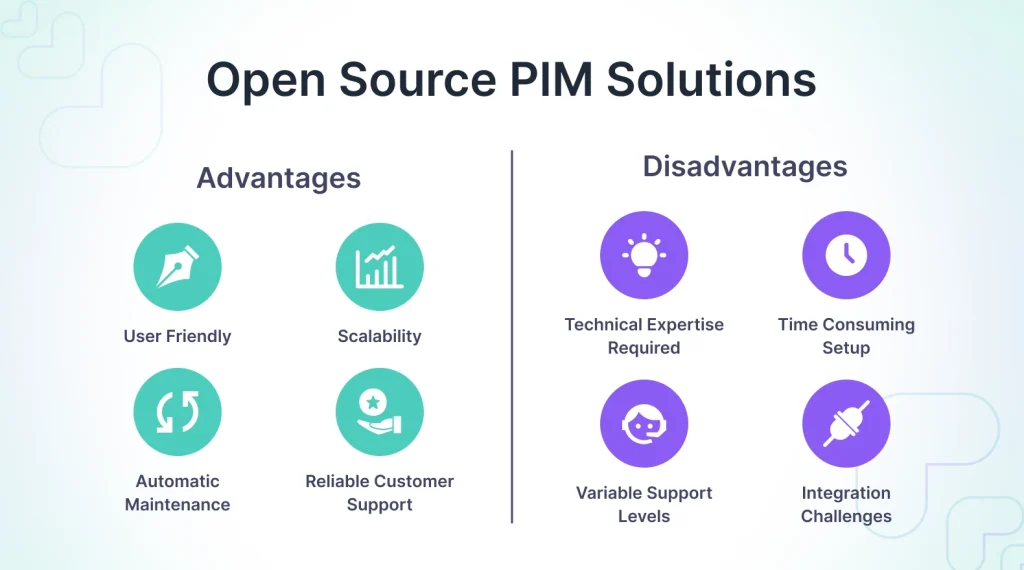
Let’s explore some of the advantages of open source PIM:
Flexible Customization
You can adjust the features and functions to fit your specific business needs.
Cost Effectiveness
The initial software cost is typically free, although you should budget for hosting, maintenance, and potential development costs.
Strong Community Support
Lots of open source PIM options have engaged communities that offer helpful resources, support for problems, and ways to work together to make things better.
Data Control
You have complete control over your data, which is important for businesses that care about following rules and keeping information safe.
Let’s explore some of the disadvantages of open source PIM:
Technical Expertise Required
Check if your team knows how to set up and keep an open source solution running, or if a simpler SaaS option would be better.
Time Consuming Setup
Setting up and personalizing an open source solution can take a lot of time, which might slow down how quickly you can launch your product.
Variable Support Levels
Even though community support can be useful, it isn’t always dependable, which can cause delays when trying to fix important problems.
Integration Challenges
Connecting open source PIM solutions with current systems or other software can be tricky and might need extra development help.
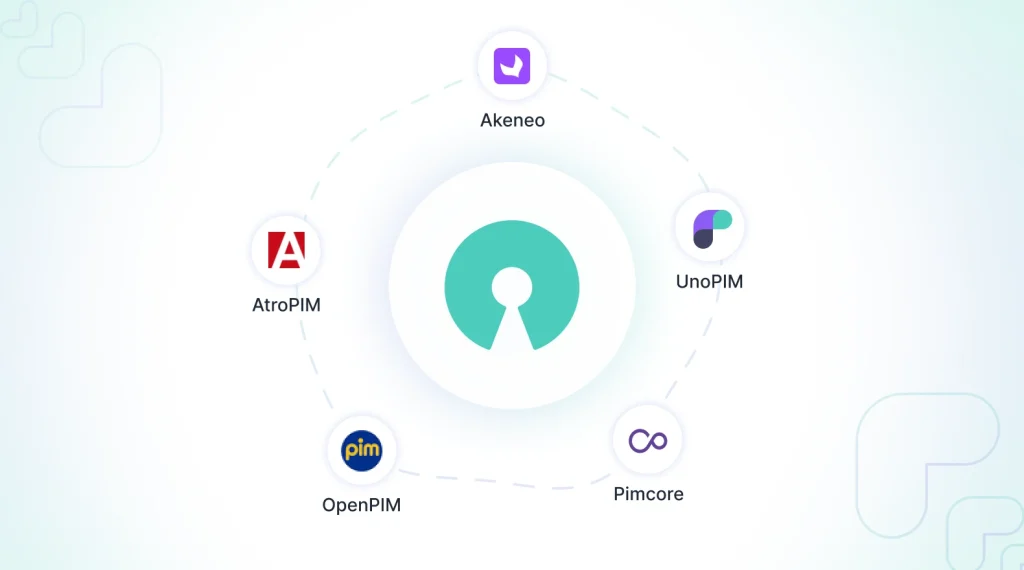
Akeneo
Akeneo PIM is a free tool that is really easy to use and has strong features. It’s a great option for companies, no matter how big or small they are.
UnoPIM
It is a versatile free PIM system that makes it easy to publish across different channels. UnoPim Laravel-based opensource PIM.
It also supports AI powered content creation, which means businesses can automatically create product descriptions and other products.
OpenPIM
A newer entry in the market, OpenPIM focuses on providing a simple and effective way to manage product data, ideal for small to medium sized businesses.
Pimcore
This all in one platform has a lot of useful features like digital asset management (DAM), product information management (PIM), and content management. It’s perfect for all your digital needs!
AtroPIM
AtroPIM is another open-source PIM solution that enables you to manage and distribute product data and information effectively.
SaaS PIM solutions provide a hosted, subscription based service that simplifies product information management.
With minimal technical overhead, businesses can focus on utilizing the software rather than maintaining it.
Let’s explore some of the advantages of SaaS PIM:
User Friendly
These solutions are typically easy to navigate and require little technical expertise, allowing teams to get started quickly.
Scalability
SaaS solutions are made to expand along with your business, making it simple to add more products without complicated upgrades.
Automatic Maintenance
The company providing the service takes care of software updates, so you always have the newest features without having to do anything.
Reliable Customer Support
Many SaaS providers give you dedicated support, which is super helpful for businesses that need quick help.
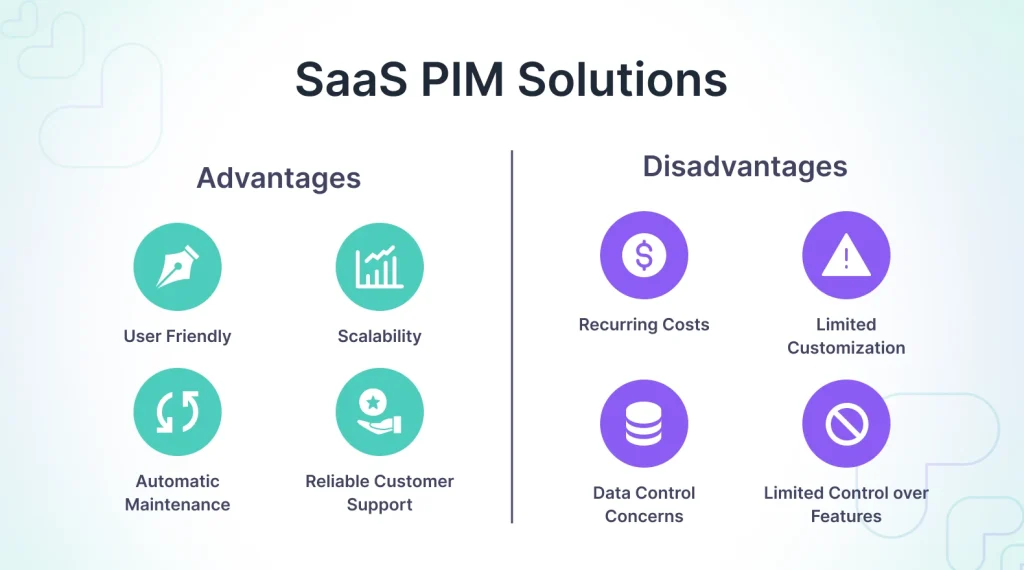
Let’s explore some of the disadvantages of SaaS PIM:
Recurring Costs
While initial costs may be lower, subscription fees can accumulate over time, potentially making it more expensive in the long run.
Limited Customization
SaaS solutions may not offer the same level of customization as open source options, requiring businesses to adapt their processes to fit the software.
Data Control Concerns
Your data resides on the provider’s servers, raising potential concerns about data ownership, compliance, and security.
Limited Control over Features
Updates and changes to the software are managed by the provider.
This means you won’t control when new features are added or how they affect your workflow.
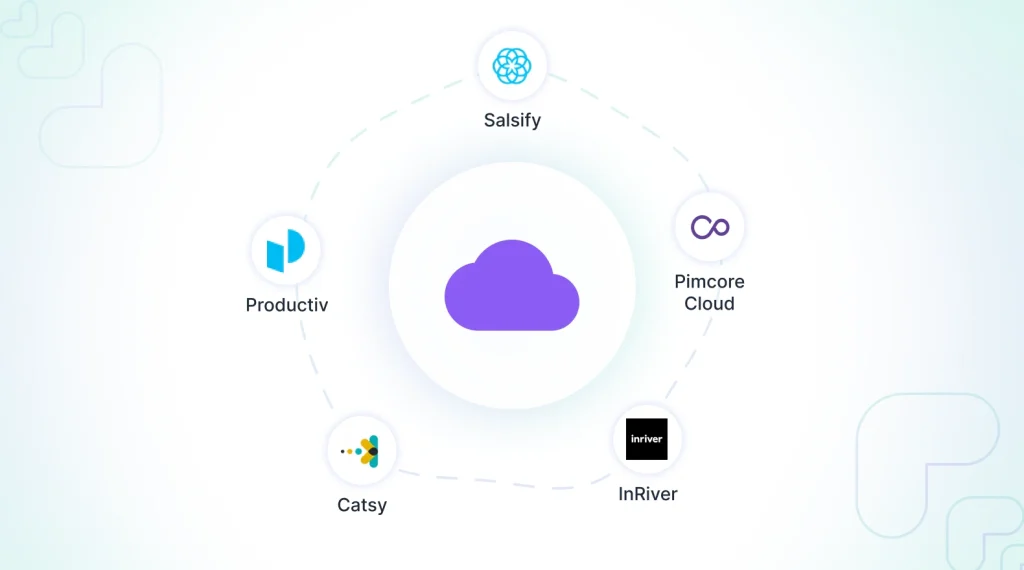
Salsify
This strong platform is all about managing and sharing product content, which makes it perfect for brands that want to improve how they show up online.
Pimcore Cloud
The cloud version of Pimcore has all the amazing features of the open source version, but it’s super easy to use because it’s a SaaS model.
InRiver
InRiver is famous for improving product marketing. It helps companies tell exciting product stories that connect with their customers.
Catsy
Catsy is an easy to use PIM solution that helps businesses, big or small, manage their product information and digital assets for online shopping.
Productiv
This provides special features designed for B2B companies, concentrating on product details that assist sales teams in connecting with customers successfully.
When deciding between open source and SaaS PIM solutions, consider the following factors:
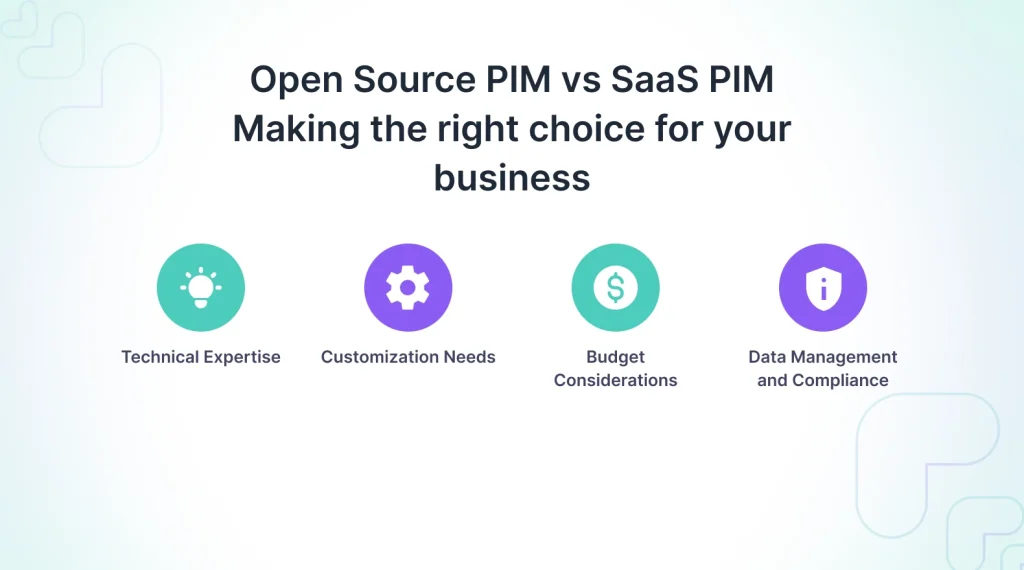
Technical Expertise
Check if your team has the know how to set up and keep an open source solution running, or if a simpler SaaS option would be better.
Customization Needs
If your business needs special features or processes, open source might give you the flexibility you want.
Budget Considerations
Study at both the initial costs and the ongoing expenses for each choice, and remember there might be extra costs with open source solutions.
Data Management and Compliance
Think about how your organization handles data security and if you feel okay with a SaaS provider taking care of your data.
Choosing the right PIM solution for your business can significantly contribute to your success. Here are some steps to help you select the top PIM system that best meets your needs:
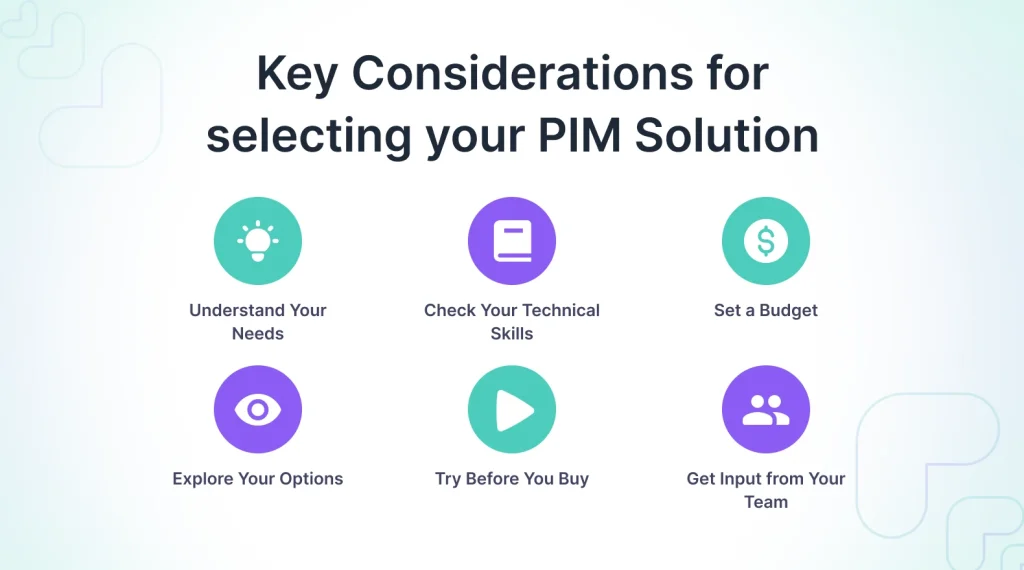
1. Understand Your Needs: Figure out what you specifically need, like how much you want it to grow, how easy it is to use, and what features are necessary.
2. Check Your Technical Skills: Decide if you have the skills in your team to manage an open source solution or if you’d rather go with a SaaS option that’s easier to handle.
3. Set a Budget: Plan out how much money you can spend for the initial setup and ongoing expenses, so you know what you can afford.
4. Explore Your Options: Look into both open source and SaaS solutions, and read reviews and case studies to see how well they work.
5. Try Before You Buy: If you can, use PIM live demos or trial periods to check how each option works for your business.
6. Get Input from Your Team: Make sure to involve people from different departments, like marketing, IT, and sales, to ensure the PIM solution works for everyone.
Choosing between open source and SaaS PIM solutions is an important choice that can affect how well your business runs and how happy your customers are.
It’s essential to know the pros and cons of both options and think about what your organization specifically needs.
If you value customization and control, open source might be the way to go.
On the other hand, if you want something easy to use and that can grow with your business, SaaS could be better.
The right product infromation management solution will help you manage your product information more efficiently and improve your business performance overall.

If you have more details or questions, you can reply to the received confirmation email.
Back to Home
Be the first to comment.